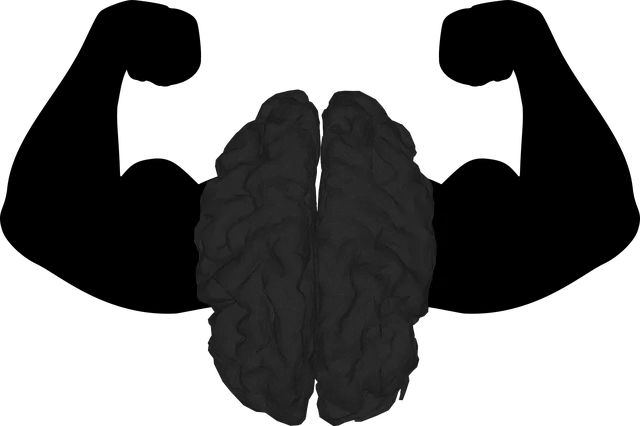Kaiser Permanente's community outreach program in Castle Rock is a successful initiative aimed at achieving mental health equity. By addressing cultural sensitivities and burnout among healthcare providers, they ensure accessible and culturally competent mental health services. Through tailored activities like Mindfulness Meditation and Mental Wellness Journaling, the program empowers residents with self-care tools, fostering trust and community engagement. Comprehending local mental health needs through research enables them to design targeted interventions, benefiting students, seniors, and all demographics in the long term. Measuring impact beyond satisfaction shows the program's effectiveness in enhancing well-being and promoting sustainable self-care practices.
In today’s digital era, community outreach programs play a pivotal role in bridging mental health disparities. This article explores how Kaiser Permanente has successfully addressed psychological well-being in Castle Rock through targeted initiatives. We delve into understanding the significance of these programs and their impact on underserved communities. From identifying local needs to designing engaging strategies, this comprehensive guide highlights effective practices. Moreover, it examines measurement techniques to evaluate success and ensure continuity, showcasing a holistic approach to promoting mental health equity in Castle Rock.
- Understanding Community Outreach: A Key to Mental Health Equity
- Kaiser Permanente's Approach to Castle Rock's Psychological Well-being
- Identifying Needs: Assessing the Mental Health Landscape in Castle Rock
- Program Design: Effective Strategies for Community Engagement
- Measuring Impact: Evaluating Success and Continuity of Outreach Programs
Understanding Community Outreach: A Key to Mental Health Equity

Community outreach programs play a pivotal role in achieving mental health equity, especially in areas like Castle Rock where disparities exist. Organizations such as Kaiser Permanente recognize the importance of understanding the unique needs and challenges faced by diverse communities. By implementing targeted initiatives, they can address barriers to care, including cultural sensitivities in mental healthcare practice and burnout prevention strategies for healthcare providers.
These programs aim to bridge gaps in access to mental health services, promote Stress Reduction Methods tailored to specific cultures and backgrounds, and foster trust between healthcare providers and underserved populations. Through community outreach, organizations like Kaiser Permanente can ensure that mental health resources are not only accessible but also culturally competent, ultimately enhancing the overall well-being of the communities they serve.
Kaiser Permanente's Approach to Castle Rock's Psychological Well-being

Kaiser Permanente’s commitment to Castle Rock’s psychological well-being is a prime example of successful community outreach program implementation. The organization has tailored its approach to address the unique mental health needs of this specific community, focusing on both individual and collective wellness. By integrating activities like Mindfulness Meditation sessions and Mental Wellness Journaling Exercise Guidance, Kaiser Permanente not only empowers residents with tools for self-care but also fosters a sense of community engagement.
This strategy aligns perfectly with the broader goals of Community Outreach Program Implementation, aiming to enhance access to mental health resources and promote overall well-being. Through these initiatives, Kaiser Permanente is making a tangible impact on the lives of Castle Rock residents, demonstrating how targeted interventions can lead to lasting improvements in psychological health.
Identifying Needs: Assessing the Mental Health Landscape in Castle Rock

In Castle Rock, understanding the mental health landscape is crucial for tailoring effective community outreach programs. Organizations like Kaiser Permanente play a pivotal role in this assessment by analyzing local needs and trends related to mental wellness. Through comprehensive research and data collection, they identify gaps in services, prevalent issues such as stress, anxiety, and depression, and unique challenges faced by different demographics within the community. This involves engaging with various groups, from students to seniors, to understand their specific emotional regulation and conflict resolution techniques requirements.
By delving into these insights, Kaiser Permanente can design initiatives that promote mental health awareness, offer tailored support through journaling exercises, and provide accessible guidance for improving overall well-being. The goal is not just to address immediate concerns but also to foster a sustainable environment where individuals feel equipped with the necessary tools to navigate their emotional journeys, ensuring long-term benefits for the community’s mental wellness.
Program Design: Effective Strategies for Community Engagement

Community outreach programs aiming to improve mental health, such as those designed by Kaiser Permanente in Castle Rock, should be meticulously crafted using effective strategies for engagement. The program design process must consider local needs and cultural context, ensuring accessibility and relevance to foster genuine connection. Incorporating evidence-based practices like the Mind Over Matter Principles can significantly enhance the impact of these initiatives. By integrating Mental Wellness Coaching Programs Development, these organizations can empower community members with skills to manage stress, improve resilience, and boost confidence—all vital components of mental wellness.
A well-designed program should leverage diverse communication channels, mix interactive workshops with one-on-one coaching sessions, and offer flexible scheduling options to accommodate various lifestyles. Collaborative partnerships with local businesses, schools, and community centers can also help expand reach and create a more inclusive environment. Tailoring these initiatives to address specific mental health challenges prevalent in the community ensures that resources are effectively allocated and that participation rates increase.
Measuring Impact: Evaluating Success and Continuity of Outreach Programs

Measuring impact is a critical aspect of community outreach programs, especially when focusing on mental health initiatives like those offered by Kaiser Permanente in Castle Rock. By evaluating the success and continuity of these programs, organizers can assess their effectiveness in improving the well-being of the target population. This involves tracking key performance indicators (KPIs) that go beyond mere attendance or satisfaction surveys. For instance, monitoring the long-term adoption of self-care practices and a boost in confidence among participants is an indicator of sustained positive change.
Regular assessments allow for adjustments to be made based on real-world outcomes, ensuring the outreach programs remain relevant and impactful. This data-driven approach can highlight areas that need further support or new strategies, fostering continuous improvement. Ultimately, effective measurement helps ensure that initiatives like Kaiser Permanente’s mental health programs in Castle Rock not only provide immediate relief from anxiety but also equip individuals with lasting self-care practices to enhance their overall well-being.
Community outreach programs, as exemplified by Kaiser Permanente’s initiatives in Castle Rock, play a pivotal role in achieving mental health equity. By understanding local needs, designing engaging programs, and rigorously evaluating their impact, organizations like Kaiser Permanente can significantly improve the psychological well-being of communities such as Castle Rock. This holistic approach ensures that resources are targeted effectively, fostering a more resilient and connected society.






